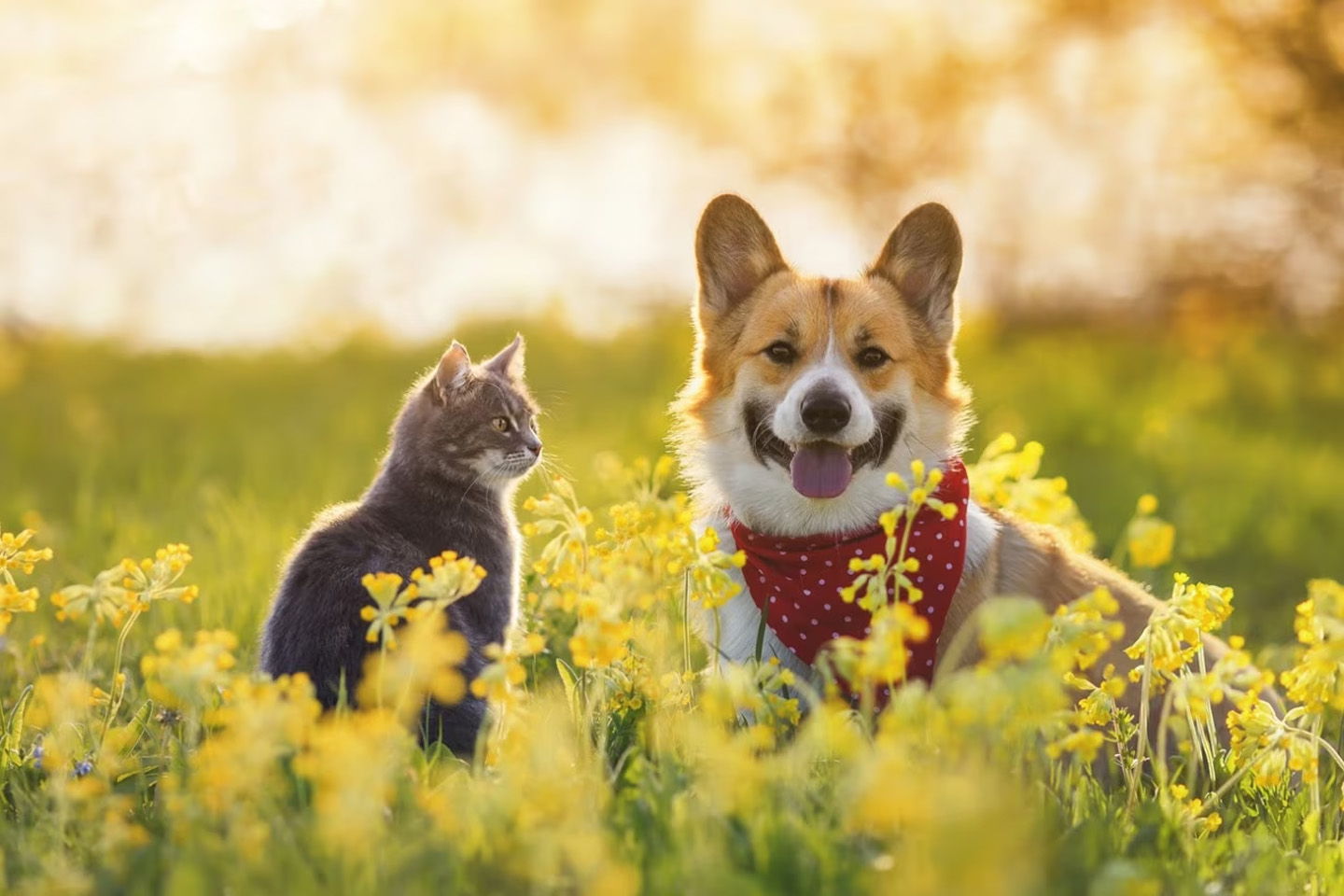Liga Asuransi – Para pengambil risiko yang terhormat, apa kabar? Saya harap bisnis Anda dan keluarga Anda baik-baik saja.
Seperti biasa, di blog ini, kami fokus membahas manajemen risiko dan asuransi. Dan kali ini, kita akan membahas risiko hewan peliharaan dan bagaimana asuransi dapat menutupinya.
Jika Anda tertarik dengan artikel ini, silakan bagikan dengan teman-teman Anda sehingga mereka dapat memahami seperti Anda.
Anda menginginkan yang terbaik untuk teman berbulu Anda sebagai pemilik hewan peliharaan yang bertanggung jawab. Anda berusaha untuk memberi mereka tempat yang nyaman, dan standar perawatan kesehatan tertinggi.
Namun, kecelakaan atau penyakit yang tidak terduga dapat terjadi, yang menyebabkan tagihan dokter hewan yang besar dan kuat yang dapat membebani keuangan Anda. Di sinilah asuransi hewan peliharaan datang untuk menyelamatkan. Seperti asuransi kesehatan manusia, asuransi hewan peliharaan menawarkan perlindungan finansial dan ketenangan pikiran mengenai kebutuhan medis hewan peliharaan Anda.
Dalam artikel ini, kita akan mempelajari dasar-dasar asuransi hewan peliharaan dan mengungkap pengetahuan penting yang harus dimiliki setiap pemilik hewan peliharaan. Apakah Anda sebagai pemilik hewan peliharaan pertama kali atau wali berpengalaman, memahami seluk beluk asuransi hewan peliharaan akan memberdayakan Anda untuk membuat keputusan berdasarkan informasi tentang kesejahteraan hewan peliharaan Anda.
Kami akan mulai dengan mengungkap konsep asuransi hewan peliharaan dan menyoroti pentingnya di dunia saat ini. Kita akan membahas berbagai jenis perlindungan asuransi hewan peliharaan yang tersedia, mulai dari rencana khusus kecelakaan hingga kebijakan komprehensif.
Sepanjang jalan, kita akan membahas faktor-faktor kunci yang perlu dipertimbangkan ketika memilih paket yang tepat untuk teman berbulu Anda, memastikannya selaras dengan kebutuhan dan anggaran Anda.
Tetapi apakah asuransi hewan peliharaan sudah memadai? Kami akan menyelidiki pertanyaan ini, memeriksa manfaat finansial dari rencana asuransi yang solid. Dengan mengevaluasi potensi biaya perawatan hewan dan membandingkannya dengan premi yang relatif terjangkau, Anda akan lebih memahami nilai asuransi hewan peliharaan yang dibawa ke meja.
Untuk membantu Anda menyelami dunia asuransi hewan peliharaan secara efektif, kami akan memberikan tips praktis untuk memilih paket yang tepat.
Kami akan memandu Anda melalui detail persyaratan penting, seperti masa tunggu, kondisi yang sudah ada sebelumnya, dan batas tahunan. Berbekal pengetahuan ini, Anda akan diperlengkapi untuk membuat keputusan berdasarkan informasi yang melindungi kesehatan hewan peliharaan dan dompet Anda.
Selanjutnya, kami akan membahas kondisi yang sudah ada sebelumnya dan dampaknya terhadap perlindungan asuransi hewan peliharaan. Memahami bagaimana penyedia asuransi yang berbeda menangani kondisi yang sudah ada sebelumnya sangat penting dalam menemukan rencana yang tepat untuk kebutuhan hewan peliharaan Anda. Kami akan menjelaskan aspek yang sering membingungkan ini, menawarkan kejelasan dan panduan.
Terakhir, kami akan memberikan wawasan berharga untuk memaksimalkan manfaat asuransi hewan peliharaan Anda. Mengajukan klaim terkadang rumit, tetapi dengan petunjuk langkah demi langkah dan kiat bermanfaat kami, Anda akan dengan mudah menavigasinya. Anda akan belajar untuk memastikan dokumentasi yang akurat, meningkatkan kemungkinan menerima penggantian yang cepat dan adil.
APA SAJA RISIKO HEWAN PELIHARAAN?
Memiliki hewan peliharaan membawa kegembiraan yang tak ternilai, tetapi penting untuk menyadari potensi risiko yang terlibat. Meskipun risiko ini seharusnya tidak menghalangi Anda untuk mengalami cinta dan kebahagiaan kepemilikan hewan peliharaan, diberi tahu memungkinkan Anda untuk mengambil tindakan pencegahan yang diperlukan dan menyediakan lingkungan yang aman bagi teman berbulu Anda. Berikut adalah beberapa risiko umum yang terkait dengan hewan peliharaan:
- Cedera yang Tidak Disengaja
Hewan peliharaan, terutama yang aktif, dapat rentan terhadap kecelakaan dan cedera. Mereka mungkin berkelahi dengan hewan lain, jatuh dari ketinggian, atau mengalami cedera saat menjelajahi lingkungan mereka. Selain itu, hewan peliharaan dapat melukai diri mereka sendiri dengan menelan benda-benda berbahaya, seperti mainan kecil atau zat beracun, atau terjerat dalam tali atau tali.
- Penyakit dan Penyakit
Hewan peliharaan rentan terhadap berbagai penyakit dan penyakit, termasuk infeksi virus, bakteri, dan parasit. Contohnya termasuk infeksi pernapasan, penyakit yang ditularkan melalui kutu, masalah pencernaan, dan kondisi kulit. Perawatan hewan secara teratur, vaksinasi, dan tindakan pencegahan seperti pengendalian parasit dapat membantu meminimalkan risiko penyakit ini.
- Reaksi
Beberapa orang dapat mengalami alergi terhadap bulu hewan peliharaan, air liur, atau urin. Alergi ini dapat menyebabkan bersin, batuk, mata gatal, dan ruam kulit. Penting untuk mempertimbangkan potensi alergi sebelum membawa hewan peliharaan ke rumah Anda, terutama jika Anda atau anggota keluarga memiliki sensitivitas yang diketahui terhadap alergen.
- Masalah Perilaku
Hewan peliharaan, terutama yang tidak dilatih atau disosialisasikan dengan baik, dapat menunjukkan masalah perilaku. Ini termasuk agresi, kecemasan perpisahan, gonggongan berlebihan, atau perilaku destruktif. Memahami kebutuhan hewan peliharaan Anda, memberikan pelatihan dan sosialisasi yang tepat, dan mencari bantuan profesional dapat membantu mengatasi dan mengelola masalah perilaku.
- Penyakit zoonosis
Penyakit tertentu dapat ditularkan antara hewan dan manusia. Penyakit zoonosis ini termasuk kondisi seperti rabies, toksoplasmosis, dan penyakit Lyme. Mempraktikkan kebersihan yang baik, menjaga vaksinasi hewan peliharaan Anda saat ini, dan mengikuti langkah-langkah pencegahan seperti pengendalian kutu dan kutu dapat membantu mengurangi risiko penyakit zoonosis.
- Risiko Diet
Nutrisi yang tidak tepat atau akses ke zat beracun dapat membahayakan hewan peliharaan. Memberi makan makanan yang tidak seimbang atau menyediakan makanan yang beracun bagi hewan dapat menyebabkan kekurangan nutrisi atau keracunan. Sangat penting untuk mendidik diri sendiri tentang nutrisi hewan peliharaan yang tepat dan menjaga zat yang berpotensi berbahaya, seperti makanan manusia tertentu, obat-obatan, dan bahan kimia rumah tangga, jauh dari jangkauan hewan peliharaan Anda.
- Pelarian yang Tidak Disengaja
Hewan peliharaan terkadang dapat melarikan diri dari rumah atau pekarangan mereka, menempatkan diri mereka pada risiko kecelakaan, tersesat, atau menghadapi situasi berbahaya. Memastikan penahanan yang aman dan tepat, seperti pagar yang terawat baik dan waktu luar ruangan yang diawasi, membantu mengurangi kemungkinan pelarian yang tidak disengaja.
Meskipun risiko ini ada, kepemilikan hewan peliharaan yang bertanggung jawab, termasuk perawatan hewan secara teratur, pelatihan dan sosialisasi yang tepat, lingkungan yang aman, dan tindakan pencegahan, dapat secara signifikan menguranginya. Dengan menyadari potensi risiko dan mengambil tindakan pencegahan yang tepat, Anda dapat menyediakan rumah yang penuh kasih dan aman untuk teman berbulu Anda.
APA CAKUPAN JAMINAN ASURANSI HEWAN PELIHARAAN?
Cakupan asuransi hewan peliharaan dapat bervariasi tergantung pada penyedia asuransi dan rencana spesifik Anda. Namun, berikut adalah beberapa cakupan umum yang ditawarkan oleh polis asuransi hewan peliharaan:
- Kecelakaan dan Cedera
Cakupan ini membantu membayar biaya dokter hewan dari kecelakaan atau cedera, seperti patah tulang, laserasi, atau menelan benda asing.
- Penyakit
Rencana asuransi hewan peliharaan sering mencakup biaya dokter hewan yang terkait dengan penyakit, termasuk infeksi, masalah pencernaan, alergi, kanker, dan kondisi kronis seperti diabetes atau radang sendi.
- Rawat Inap dan Bedah
Cakupan ini membantu menutupi biaya rawat inap di rumah sakit, operasi, dan biaya terkait, seperti anestesi, tes diagnostik, dan perawatan pasca operasi.
- Obat Resep
Asuransi hewan peliharaan dapat mencakup obat yang diresepkan, termasuk antibiotik, penghilang rasa sakit, dan obat jangka panjang untuk kondisi kronis.
- Tes Diagnostik
Cakupan untuk prosedur diagnostik seperti tes darah, sinar-x, ultrasound, dan pekerjaan laboratorium dapat disertakan, membantu mendiagnosis dan memantau kondisi kesehatan hewan peliharaan Anda.
- Kondisi Keturunan dan Bawaan
Beberapa rencana asuransi hewan peliharaan mencakup kondisi keturunan dan bawaan, yang merupakan kondisi yang sudah ada sebelumnya yang dapat mempengaruhi ras tertentu. Contohnya termasuk hip dysplasia, cacat jantung, atau gangguan mata.
- Terapi Alternatif
Kebijakan khusus mungkin menawarkan cakupan untuk terapi alternatif seperti akupunktur, perawatan chiropraktik, atau rehabilitasi fisik, yang dapat bermanfaat bagi hewan peliharaan dengan masalah muskuloskeletal atau nyeri kronis.
- Perawatan Darurat
Asuransi hewan peliharaan dapat memberikan perlindungan untuk perawatan hewan darurat, seperti kunjungan setelah jam kerja, perawatan kritis, atau operasi darurat, memastikan hewan peliharaan Anda menerima perawatan yang cepat selama keadaan yang tidak terduga.
Penting untuk dicatat bahwa sementara cakupan ini biasanya ditawarkan, tingkat cakupan, batas penggantian, deductible, dan masa tunggu dapat bervariasi di antara penyedia asuransi hewan peliharaan yang berbeda. Selain itu, asuransi hewan peliharaan biasanya tidak mencakup kondisi yang sudah ada sebelumnya, jadi penting untuk meninjau detail kebijakan dan memahami batasan atau pengecualian apa pun sebelum membeli paket.
Untuk menemukan cakupan yang paling cocok untuk hewan peliharaan Anda, hati-hati menilai jenis, usia, dan kondisi yang sudah ada sebelumnya, dan membandingkan penyedia asuransi yang berbeda untuk memastikan Anda memilih rencana yang sesuai dengan kebutuhan spesifik hewan peliharaan Anda dan anggaran.
APA PERSYARATAN UNTUK MENDAPATKAN JAMINAN ASURANSI HEWAN PELIHARAAN?
Untuk mendapatkan asuransi hewan peliharaan, beberapa kondisi umum mungkin perlu dipenuhi. Ingatlah bahwa kondisi ini dapat bervariasi tergantung pada penyedia asuransi dan kebijakan spesifik yang Anda pilih. Berikut adalah beberapa persyaratan umum:
- Usia Hewan Peliharaan
Sebagian besar penyedia asuransi hewan peliharaan memiliki batas usia minimum dan maksimum untuk mendaftarkan hewan peliharaan. Biasanya, Anda dapat memastikan hewan peliharaan Anda ketika mereka berusia enam minggu, sedangkan batas usia maksimum dapat berkisar antara 8 hingga 14 tahun, tergantung pada penyedia. Beberapa perusahaan asuransi mungkin menawarkan pertanggungan untuk hewan peliharaan yang lebih tua, tetapi mungkin datang dengan batasan tertentu atau premi yang lebih tinggi.
- Masa Tunggu
Polis asuransi hewan peliharaan sering memiliki masa tunggu, yang merupakan durasi tertentu yang harus berlalu setelah aktivasi polis sebelum pertanggungan untuk kondisi tertentu menjadi efektif. Masa tunggu dapat berkisar dari beberapa hari hingga beberapa minggu, tergantung pada perusahaan asuransi dan kondisinya. Setiap penyakit atau cedera yang terjadi mungkin tidak ditanggung selama masa tunggu.
- Kondisi yang Sudah Ada Sebelumnya
Kondisi yang sudah ada sebelumnya adalah masalah kesehatan hewan peliharaan Anda sebelum polis asuransi dimulai atau selama masa tunggu. Kondisi ini umumnya tidak ditanggung oleh asuransi hewan peliharaan. Sangat penting untuk memahami bagaimana setiap perusahaan asuransi mendefinisikan kondisi yang sudah ada sebelumnya dan bagaimana mereka menanganinya dalam kebijakan mereka.
- Catatan Kedokteran Hewan
Penyedia asuransi mungkin memerlukan akses ke catatan dokter hewan atau riwayat medis hewan peliharaan Anda. Ini membantu mereka menilai kondisi yang sudah ada sebelumnya dan menentukan kelayakan mereka untuk cakupan. Memiliki catatan medis yang komprehensif dan terkini untuk hewan peliharaan Anda bermanfaat saat mengajukan permohonan asuransi hewan peliharaan.
- Pembatasan berkembang biak
Beberapa penyedia asuransi mungkin memiliki batasan pada ras atau spesies tertentu. Breed tertentu mungkin lebih rentan terhadap kondisi keturunan, yang menyebabkan risiko dan biaya yang lebih tinggi. Periksa apakah jenis hewan peliharaan Anda memenuhi syarat untuk pertanggungan dengan perusahaan asuransi pilihan Anda.
- Cakupan Kesehatan
Meskipun tidak selalu menjadi persyaratan, beberapa penyedia asuransi menawarkan kesehatan opsional atau cakupan perawatan rutin untuk layanan pencegahan seperti vaksinasi, ujian tahunan, dan pencegahan kutu / kutu. Jika Anda ingin layanan ini termasuk dalam polis Anda, Anda mungkin perlu memilih paket yang menawarkan cakupan kesehatan.
Penting untuk meninjau secara menyeluruh syarat dan ketentuan polis asuransi hewan peliharaan, termasuk batasan, pengecualian, atau masa tunggu, sebelum mendaftarkan hewan peliharaan Anda. Ini memastikan bahwa Anda memahami kondisi spesifik yang perlu dipenuhi dan membantu Anda memilih rencana yang sesuai dengan kebutuhan dan anggaran hewan peliharaan Anda.
MENGAPA UNTUK ASURANSI HEWAN PELIHARAAN ANDA PERLU MENGGUNAKAN JASA BROKER ASURANSI?
Meskipun tidak selalu perlu menggunakan broker asuransi untuk mendapatkan asuransi hewan peliharaan, ada beberapa situasi di mana broker asuransi dapat membantu:
- Keahlian dan Bimbingan
Broker asuransi adalah profesional dengan pengetahuan industri asuransi yang mendalam. Mereka dapat memberikan panduan dan saran yang disesuaikan dengan kebutuhan spesifik Anda. Broker dapat membantu Anda memahami seluk-beluk polis asuransi hewan peliharaan yang berbeda, menjelaskan opsi cakupan, dan membantu Anda memilih paket yang paling sesuai dengan kebutuhan dan anggaran hewan peliharaan Anda.
- Akses ke Beberapa Penyedia Asuransi
Broker asuransi bekerja dengan beberapa perusahaan asuransi, memberi mereka akses ke berbagai polis asuransi hewan peliharaan. Alih-alih mendekati perusahaan asuransi individu, broker dapat menghemat waktu dan tenaga Anda dengan menghadirkan beberapa opsi untuk dibandingkan. Mereka dapat membantu Anda menavigasi kompleksitas kebijakan yang berbeda, syarat dan ketentuan mereka, memungkinkan Anda untuk membuat keputusan.
- Rekomendasi yang Disesuaikan
Broker asuransi dapat menilai kebutuhan unik hewan peliharaan Anda, dengan mempertimbangkan usia, jenis, dan kondisi yang sudah ada sebelumnya. Berdasarkan evaluasi ini, mereka dapat merekomendasikan rencana asuransi yang sesuai yang memberikan cakupan yang diinginkan. Broker juga dapat memberi tahu Anda tentang kemungkinan pengecualian atau batasan kebijakan khusus yang dapat memengaruhi cakupan hewan peliharaan Anda.
- Bantuan dengan Klaim
Broker asuransi dapat memberikan dukungan ketika datang untuk mengajukan klaim. Mereka dapat memandu Anda melalui proses klaim, memastikan Anda mengirimkan semua dokumentasi yang diperlukan dan memenuhi persyaratan penyedia asuransi. Jika ada masalah yang muncul selama proses klaim, broker dapat bertindak sebagai perantara, penghubung antara Anda dan perusahaan asuransi untuk membantu menyelesaikannya.
- Dukungan Berkelanjutan
Broker asuransi dapat menawarkan bantuan berkelanjutan di seluruh polis asuransi hewan peliharaan Anda. Mereka dapat membantu Anda meninjau pertanggungan Anda karena kebutuhan hewan peliharaan Anda berubah dari waktu ke waktu, membantu pembaruan kebijakan, dan menjawab pertanyaan atau masalah apa pun terkait pertanggungan Anda.
Penting untuk dicatat bahwa sementara broker asuransi dapat memberikan bantuan yang berharga, mereka mungkin menerima komisi dari perusahaan asuransi untuk kebijakan yang mereka jual. Ini berarti insentif keuangan dapat mempengaruhi rekomendasi mereka. Itu selalu ide yang baik untuk melakukan penelitian Anda sendiri, membandingkan pilihan yang berbeda, dan mempertimbangkan bekerja dengan broker terkemuka yang menempatkan kepentingan terbaik Anda terlebih dahulu.
Pada akhirnya, apakah Anda memilih untuk menggunakan broker asuransi untuk asuransi hewan peliharaan adalah keputusan pribadi. Itu tergantung pada tingkat kenyamanan Anda dengan menavigasi pasar asuransi dan keinginan Anda untuk saran dan dukungan ahli dalam menemukan cakupan yang paling cocok untuk hewan peliharaan Anda.
KESIMPULAN
Dengan mengenali risiko yang terkait dengan kepemilikan hewan peliharaan dan memahami manfaat asuransi hewan peliharaan, Anda diberdayakan untuk mengambil langkah proaktif dalam melindungi kesehatan dan kesejahteraan teman tercinta Anda. Asuransi hewan peliharaan bertindak sebagai jaring pengaman, memberikan bantuan keuangan selama kecelakaan, penyakit, dan keadaan darurat, memungkinkan Anda untuk fokus memberikan perawatan terbaik untuk hewan peliharaan Anda tanpa tagihan dokter hewan yang besar dan kuat.
Pada akhirnya, berinvestasi dalam asuransi hewan peliharaan memberi Anda keyakinan bahwa Anda menyediakan perawatan kesehatan yang komprehensif untuk hewan peliharaan Anda. Ini memastikan bahwa ketika keadaan yang tidak terduga muncul, Anda siap untuk memberikan perhatian medis hewan peliharaan Anda tanpa mengorbankan kesejahteraan atau stabilitas keuangan mereka.
Sebagai pemilik hewan peliharaan yang bertanggung jawab, merangkul konsep asuransi hewan peliharaan dan memilih paket yang sesuai dengan kebutuhan unik hewan peliharaan Anda adalah bukti komitmen Anda terhadap kesehatan dan kebahagiaan mereka secara keseluruhan. Dengan asuransi hewan peliharaan di tempat, Anda dapat menikmati perjalanan kepemilikan hewan peliharaan yang luar biasa sambil mengetahui bahwa Anda siap untuk apa pun yang mungkin menghampiri Anda.
Salah satu broker asuransi terkemuka di Indonesia yang berfokus pada asuransi hewan peliharaan adalah L&G Insurance Broker.
Untuk semua kebutuhan asuransi Anda, hubungi L&G sekarang!
—
MENCARI PRODUK ASURANSI? JANGAN BUANG WAKTU ANDA DAN HUBUNGI KAMI SEKARANG
24 JAM L&G HOTLINE: 0811-8507-773 (CALL – WHATSAPP – SMS)
website: lngrisk.co.id
Email: customer.support@lngrisk.co.id
—













